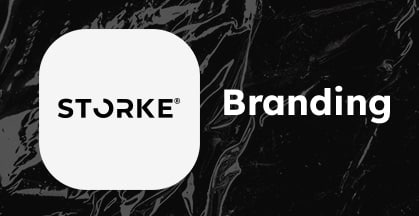How To Write Your Brand’s First Blog Post
So, you’ve decided to create the first blog post for your brand. Congratulations! Running a blog can be a great way to connect with your audience, establish yourself as an authority in your field, and drive traffic to your website. But where do you start? Here are some tips for writing your brand’s first blog post.
1. Define your brand’s voice and tone
Before you start writing, it’s important to determine the voice and tone of your brand identity. Are you casual and conversational, or more formal and professional? Do you use humor, or prefer a more serious approach? The voice and tone of your blog should match the overall personality of your brand. This will help you establish consistency in your messaging and build trust with your audience.
2. Choose a compelling topic
Your first blog post is an opportunity to introduce your brand to your audience and create a positive first impression. Choose a topic that is relevant to your brand and is likely to be of interest to your target audience. This could be a common problem your customers face and how to solve it, a new product launch, or an industry trend. Make sure your topic is interesting, informative, and engaging.
How to Choose a Blog Topic?
When choosing a blog topic, it is important to consider your interests, expertise, and target audience. Brainstorm several ideas, and narrow down your options by considering which topic will appeal to your readers. Research popular trends and keywords in your niche to ensure your blog is current and relevant. You may also want to consider the competition in your chosen topic to ensure it is not oversaturated. Additionally, think about what resources and information you have to offer that may set your blog apart and provide valuable content services. Ultimately, the best blog topics are those that you are passionate about and can provide unique value to your readers.
3. Research keywords
Keywords are the phrases that people type into search engines when they’re looking for information online. Researching keywords related to your topic can help you write content that is optimized for search engines. Tools like Google AdWords Keyword Planner can help you identify common keywords and phrases related to your topic. Using these keywords throughout your post can improve your search engine ranking and help drive traffic to your blog.
4. Outline your post
Before you start writing, create an outline for your blog post. This will help you organize your thoughts and ensure that your post is well-structured and easy to read. Your outline should include a catchy headline, an introduction that hooks your reader, a main body that covers your topic in depth, and a conclusion that wraps up your post and encourages readers to engage further with your brand.
5. Write a great headline
Your headline is the first thing that people will see when they come across your blog post. It must be compelling enough to make them want to click and read more. Your headline should be short and snappy, and include the keywords you researched earlier. Use numbers, questions, or emotional triggers to make your headline stand out.
6. Use an engaging introduction
Your introduction should hook your reader’s attention and entice them to keep reading. Tell a story, ask a question, make a bold statement, or use humor to engage your audience. Make sure your introduction is relevant to your topic and sets the stage for the rest of your post.
7. Write in a conversational tone
Your blog posts should be easy to read and understand. Use short sentences, simple language, and avoid technical jargon. Write in a conversational tone, as if you’re having a conversation with a friend. This will help you connect with your audience and make your content more accessible.
8. Use visuals
Visuals can make your blog posts more engaging and help break up the text. Use photos, infographics, or videos to illustrate your points and make your content more visually appealing. Make sure your visuals are high-quality and relevant to your topic.
9. Include a call to action
At the end of your post, include a call to action (CTA) that encourages your readers to engage further with your brand. This could be signing up for your newsletter, following you on social media, or checking out a new product or service. Make sure your CTA is relevant to your post and provides value to your readers.
10. Edit, proofread, and optimize
After you’ve written your post, take the time to edit and proofread it. Check for spelling and grammar errors, and make sure your post flows well and is easy to read. Once you’re happy with your post, optimize it for search engines by using keywords throughout your content, including in your headline and meta description. Finally, make sure your post is formatted correctly and looks good on different devices.
In conclusion, writing your brand’s first blog post can be daunting, but following these tips can help you create content that engages your audience, establishes your brand as a thought leader, and drives traffic to your website. Remember to define your brand’s voice and tone, choose a compelling topic, research keywords, outline your post, write a great headline and engaging introduction, use visuals, include a call to action, and edit and optimize your post before hitting publish. Good luck!
How Webloo Helps
Your digital strategy should fit the unique requirements of your business and target audience. There is no one-size-fits-all approach, so it’s important to discover what works best for your company and monitor the impact of each action on your overall success.
As a branding agency, we create and reestablish your brand identity via web design and app design, brand development, and content services. Schedule a call to see how we can help you with our unique integrated marketing strategy.
What does your business need?
Schedule a Strategy SessionYou may also like











